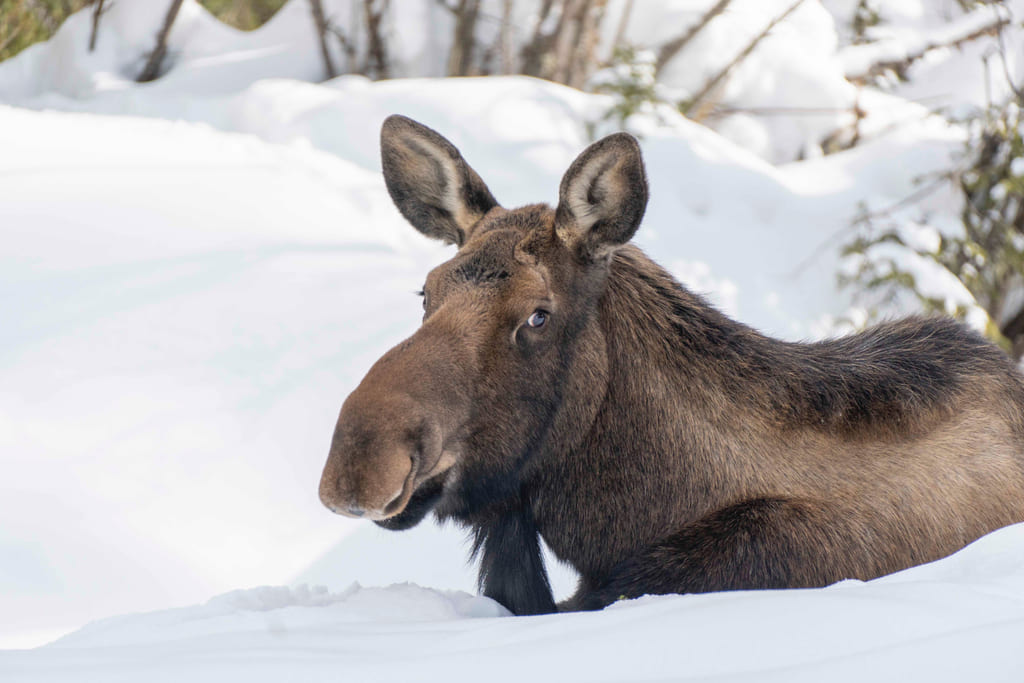After bison, moose are the second-largest naturally occurring land animal in North America. Nice try horses, you’re imported.
Unlike other members of the deer family, moose have no white rump patch. They’re brown all over and darker underneath, according to the definitive guide to the Rocky Mountains, Ben Gadd’s Handbook of the Canadian Rockies.




Moose like this one, spotted walking up Jasper National Park’s Maligne River, have had to eke out a tough living over the winter. But they’re well-designed for an ice-age existence in cold, snowy, marshy country, says Gadd. Their long legs help them cruise through deep snow as they search out their favourite edible plant species: willows, red-osier dogwood and shrub-size aspen and poplar. Makes sense that in Algonquin, “moose” means “twig-eater.”

In winter, moose spend their time at higher elevations, Gadd points out. They can often be spotted kneeling in the middle of the road in winter, licking highway salt, so heads up if you’re driving at dusk.
Wolves and bears are moose’s main predators. If a young moose survives its first year, they’ve got a decent chance of making it for another two decades. Stressed? Perhaps. But not on this day.
Like these images? Follow photographer Simone Heinrich’s Instagram account and consider buying a print!


